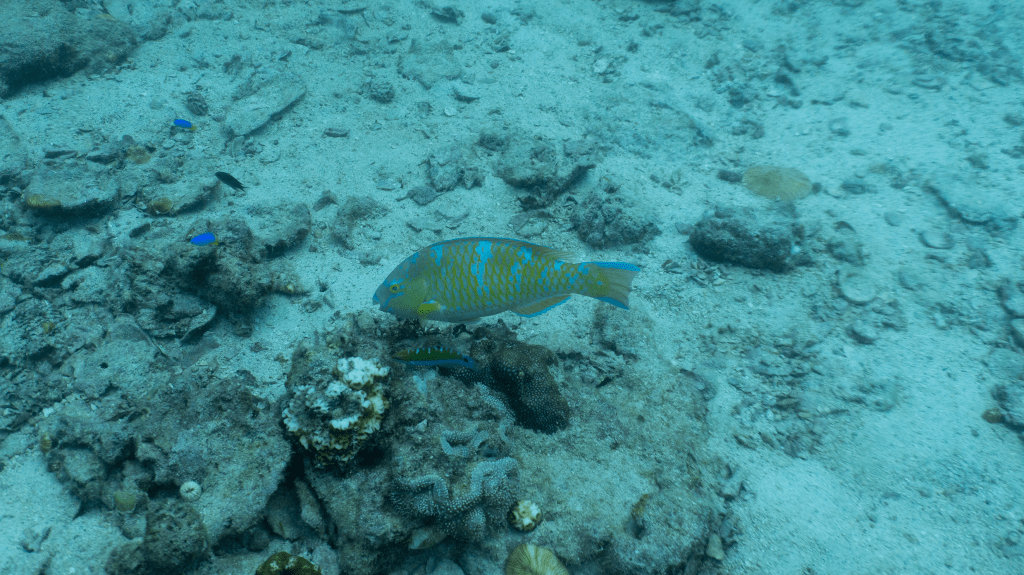Blue-barred parrotfish (Scarus ghobban)

The blue-barred parrotfish, also known as the yellow-scaled parrotfish (Scarus ghobban), is a vibrant marine fish that plays a crucial role in coral reef ecosystems.
This species is found throughout the Indo-Pacific region, ranging from East Africa to Australia, including the waters of Japan, the Galápagos Islands, and French Polynesia. It inhabits coastal areas with sandy bottoms, seagrass beds, and the edges of coral reefs, descending to depths of up to 30 meters.
The blue-barred parrotfish has a distinctive coloration: its body shimmers with greenish-blue hues, complemented by thin blue stripes along its sides. Some individuals may display pink or yellow patches on the ventral side, while their fins are often adorned with a bright blue border. Adult fish typically reach an average length of about 45 cm, though under favorable conditions, they can grow up to 90 cm.
This species grows rapidly and can live up to 13 years.

Like other parrotfish, it feeds on algae, which it scrapes off rocks and corals using its powerful, beak-like fused teeth. This behavior not only provides sustenance but also helps maintain reef health by preventing excessive algal growth. Additionally, the fish processes coral material, turning it into sand, which plays a vital role in shaping the ocean floor.
The blue-barred parrotfish is diurnal and is usually seen in small groups. At night, it seeks shelter among corals or in crevices to avoid predators.
Reproduction occurs in open water, where females release eggs that are fertilized by males and develop quickly. The larvae drift in the water column before transitioning into juvenile fish. Like many other parrotfish species, individuals may change sex throughout their lives, a phenomenon linked to their social structure and hierarchy within the group.
